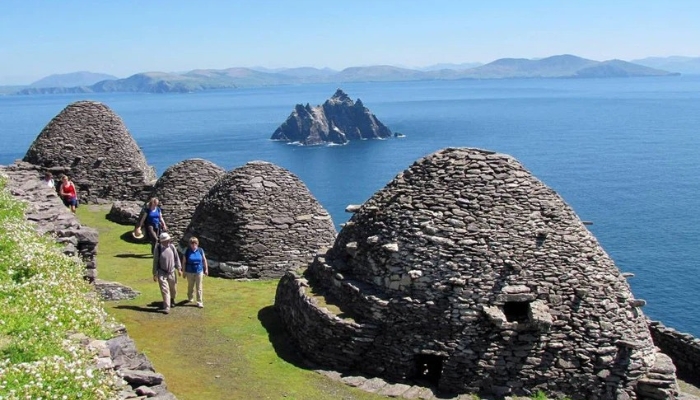
Ireland is home to a brand-new marine park, and it’s attracting attention from nature lovers across the globe. The park, called the “Wild Atlantic Marine Park,” was established on the west coast of Ireland. The area has long been known for its rich marine life, stunning scenery, and coastal heritage. Now, the official park status offers new protection for the wildlife and a fresh opportunity for people to explore Ireland’s ocean treasures.
Located off the coast of County Clare, the Wild Atlantic Marine Park spans over 200 square kilometers of sea and shoreline. The area is famous for its rocky cliffs, hidden coves, and historical shipwrecks. It is also a haven for seabirds, dolphins, seals, and whales. Many locals and tourists are excited to visit the park to enjoy boat tours, whale-watching trips, and diving adventures. But beyond the excitement, the park is also a crucial step in preserving Ireland’s marine ecosystems.
Why Ireland Needed a Marine Park
Ireland’s marine environment is special. It sits along the edge of the Atlantic Ocean, where warm and cold currents mix. This creates the perfect conditions for a diverse range of marine life. Thousands of species, from tiny plankton to massive whales, call Ireland’s waters home. But in recent years, human activities have started to take a toll on the ocean. Overfishing, pollution, and climate change are threatening marine species and their habitats.
In response, many environmental groups have been calling for stronger protections. The creation of Ireland’s first marine park is a significant answer to these calls. The park provides a safe space for marine life to thrive, free from harmful activities. Fishing, for example, will be limited in the park’s waters to allow fish populations to recover and grow.
Shipwrecks: Windows to the Past
One of the most exciting features of the Wild Atlantic Marine Park is its collection of shipwrecks. For centuries, the wild, unpredictable waters off the Irish coast have been dangerous for sailors. As a result, many ships have sunk in the area, leaving behind a rich underwater history.
Divers are particularly drawn to these wrecks. Some of the ships date back to the 16th century, offering a glimpse into Ireland’s past. Many of these wrecks have been well-preserved, thanks to the cold Atlantic waters. Explorers can find remnants of old merchant ships, war vessels, and even pirate ships. Each shipwreck tells a story, and these stories add a sense of mystery and adventure to the park.
Visitors don’t need to be experienced divers to enjoy these wrecks. Some boat tours and glass-bottom boat rides allow tourists to view the wrecks from above. This makes the history accessible to everyone, from seasoned divers to families with children.
A Birdwatcher’s Paradise
Birdwatchers also have a lot to look forward to in Ireland’s marine park. The cliffs and islands along the coast serve as nesting grounds for thousands of seabirds. The park is home to puffins, razorbills, guillemots, and gannets, to name a few.
During the summer months, the cliffs come alive with the sounds of these birds. Puffins, with their bright orange beaks, are a particular favorite among visitors. These small, colorful birds can often be seen diving into the sea in search of fish. Gannets, on the other hand, are known for their spectacular diving skills. They plunge from the air into the water at incredible speeds, catching fish beneath the surface.
The park offers guided bird-watching tours, which are a fantastic way to learn about the birds and their habits. Visitors can also explore on their own, walking along the coastal paths with binoculars in hand.
Whale and Dolphin Spotting
For many visitors, the biggest highlight of the Wild Atlantic Marine Park is the chance to see whales and dolphins. The waters around Ireland are known for being home to several species of whales, including minke whales, fin whales, and even the mighty humpback whale. Dolphins are also common and can often be seen swimming close to the shore.
Whale-watching boat tours are one of the most popular activities in the park. Tour guides help spot whales and dolphins and teach passengers about the animals’ behavior. Some lucky visitors may even witness a humpback whale breaching—a sight where the whale leaps out of the water before crashing back down. It’s a once-in-a-lifetime experience for many.
Dolphins are more frequently seen, especially common bottlenose dolphins, which often swim alongside boats. Sometimes, dolphins put on a playful display, jumping out of the water and showing off their acrobatics.
Protecting the Future of Marine Life
The creation of Ireland’s first marine park is not just about enjoying the beauty of nature. It is also a commitment to protecting that beauty for future generations. Marine parks are vital in conserving marine life, as they limit harmful human activities like overfishing, mining, and pollution.
Scientists will also use the park to study marine species and ecosystems. These studies will help in understanding the impacts of climate change and human activity on the ocean. The information gathered could guide future efforts to protect marine environments, not just in Ireland, but across the globe.
Local communities are also getting involved in the park’s protection. Many people who live in coastal towns depend on fishing and tourism for their livelihoods. By managing these activities carefully, the park aims to support the local economy while preserving the marine ecosystem.



